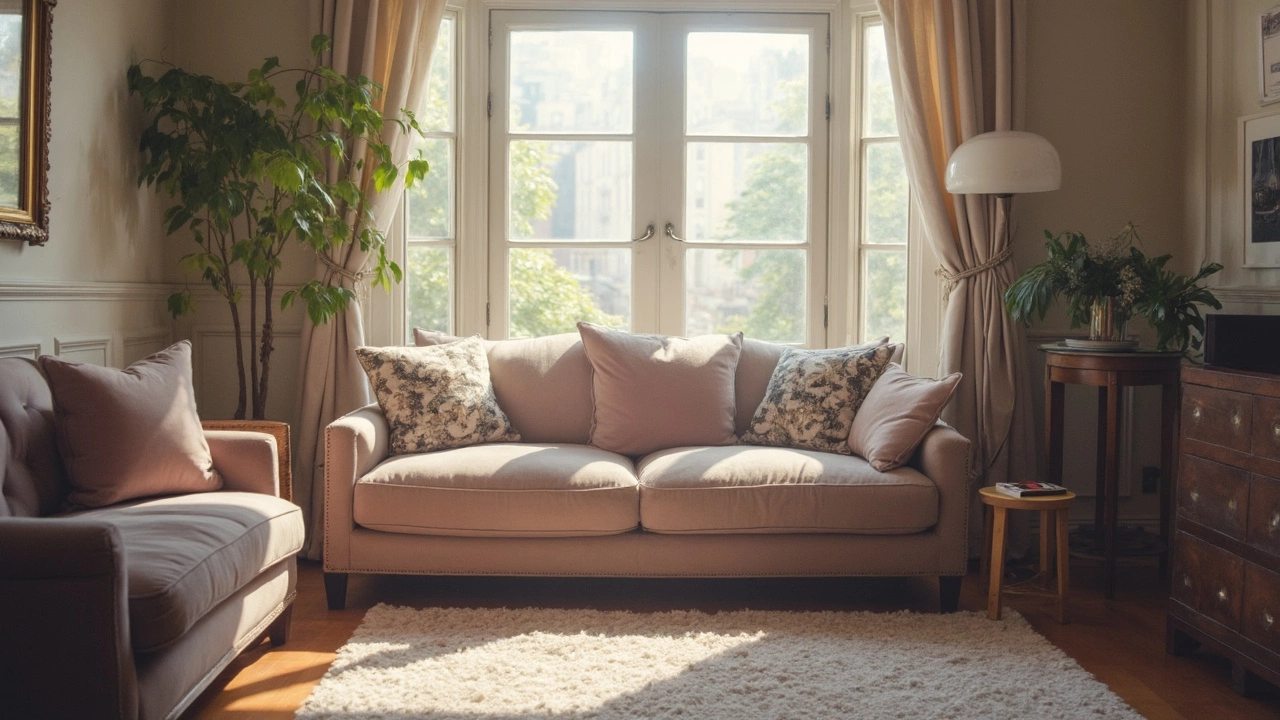Placing a sofa in the wrong spot can mess up your room's vibe and functionality. Avoid common mistakes like placing a sofa right in front of windows or blocking pathways. Discover why positioning is key to comfort and how lighting and traffic flow influence sofa placement. Learn practical tips to make the best out of your space while keeping it stylish.
Sofa Placement Tips for a Perfect Living Room
First thing you need to know: a sofa isn’t just a seat, it defines how the whole room works. If you put it in the wrong spot, the space feels cramped, the TV is awkward, and walking around becomes a chore. Let’s sort that out with simple steps you can try right now.
Basics of Sofa Positioning
Start by looking at the room’s focal point – usually a TV, fireplace, or a big window. The sofa should face it, but don’t force a straight‑on view if it blocks traffic. Aim for a 45‑degree angle if the room is narrow; that opens up pathways and still lets eyes meet the focal point.
Measure the distance from the sofa to the focal point. A good rule of thumb is to keep about three to four feet between them. This gives enough room for a coffee table and lets you walk around comfortably.
Watch the traffic flow. People need a clear line from the door to the main area. If your sofa sits directly in that line, move it back a foot or tuck one end against a wall. Adding a side chair or a slim console can keep the flow smooth.
Don’t forget the room’s shape. In a rectangular room, place the sofa along the longer wall and add a rug that’s at least 2‑ft larger than the sofa’s footprint. In a square room, a centered sofa works best, with chairs on either side to create a balanced feel.
Advanced Tricks to Make the Most of Your Space
Use floating placement. Pull the sofa away from the wall by a few inches and add a low console behind it. This adds storage, looks modern, and prevents the room from feeling boxed in.
If you have an open‑plan layout, treat the sofa as a room divider. Place it perpendicular to the kitchen or dining area to create a natural boundary without blocking sightlines.
Play with height. A low-back sofa works well in rooms with high ceilings, while a taller back can fill a space with low ceilings and make it feel cozier.
Layer with side tables and lamps. A side table on each end of the sofa lets you keep drinks and books handy and breaks up the visual length. A floor lamp behind the sofa adds ambient light without taking up floor space.
Finally, test it out. Sit on the sofa, watch the TV, walk around – if anything feels off, shift it a few inches. Small tweaks often make the biggest difference.
With these basics and a few pro tricks, you can place your sofa so the room feels open, functional, and stylish. Remember, the right spot makes the whole space work together, not against each other.
